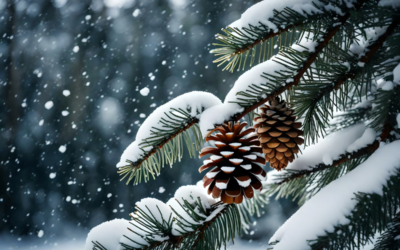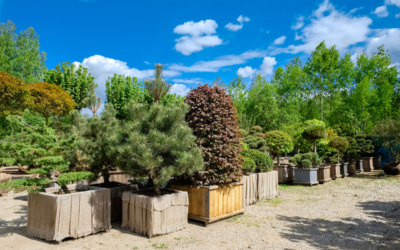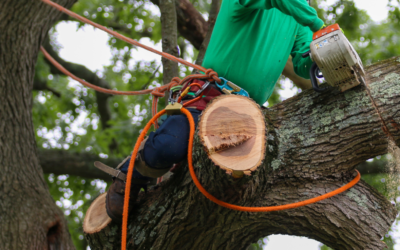As we move into autumn, our interest turns indoors. But did you know that fall can be the best time to plant many trees?
Trees grow in two different directions—up and down—and each takes energy. The upper part, the part we see, uses sunlight falling on its leaves to convert solar energy through photosynthesis into making the food that nourishes growth. But there’s a lot going on below ground, too.
As trees and other plants develop, they send out a network of roots that is essential to their health. Roots gather moisture and nutrients from the soil and anchor the plant firmly in the ground. And that takes energy, too.
The Case for Fall Planting
Roots grow best in cooler soil. Planting a tree in the fall while the soil is still workable gives the roots time to spread and nourish the plant. And since the cold air signals the tree to stop making leaves and new upper growth, its energy can be directed below ground. This gives the tree a solid foundation for growth come springtime. It’s also why it’s important to keep your trees, shrubs, and other perennials watered throughout the winter.
Is There a Case for Spring Planting?
If fall planting is preferable, why are nurseries chock full of trees in the spring? Are they pulling a fast one on you? No, they just understand that people are more enthusiastic about landscaping in the spring than in the fall, and they’re in the business of selling trees. But what do you think they were doing all winter? Growing young trees in the ground to be ready for spring sale.
There’s nothing wrong with spring planting per se. Properly planted and maintained spring trees will have time to develop a root structure that will serve them well during the winter, even if much of their energy is devoted to leafing and upward growth. It’s just that fall planting directs most growth downward, which can be a benefit to young trees.
Besides, selection can be better in the spring as the full inventory goes on the market.
Deciduous vs Evergreens
Since deciduous trees lose their leaves in fall, their need for water is reduced considerably. But evergreen leaves and needles lose water all winter long, especially broad-leafed varieties, and deep frost lines can stress their root systems. So even though we think of evergreens as cold weather trees, spring planting will give their roots a better opportunity to grow deep enough to reach the moisture they need to prevent spring browning and die-off.
Times to Avoid
Intense midsummer heat and drought put undue stress on trees, especially tender young ones. Deeply frozen soil deprives roots of moisture and is difficult to work for proper planting. So avoid extremes of both hot and cold to give your trees the start they need.
One More Reason to Plant in the Fall
Just as nurseries are chock-full of trees in the spring, in fall their inventory has dwindled and prices drop. But good nurseries keep at least some stock year-round, so late summer and fall are great times to seek out bargains.
Need Help? Call a Pro
If you need help choosing the right trees and planting times for your landscape, Donovan Arborists offers planting, pruning, and shearing services as well as a complete landscape maintenance package for property in the Denver area.
We’re always happy to give free estimates to homeowners and property managers for any services they may need.




